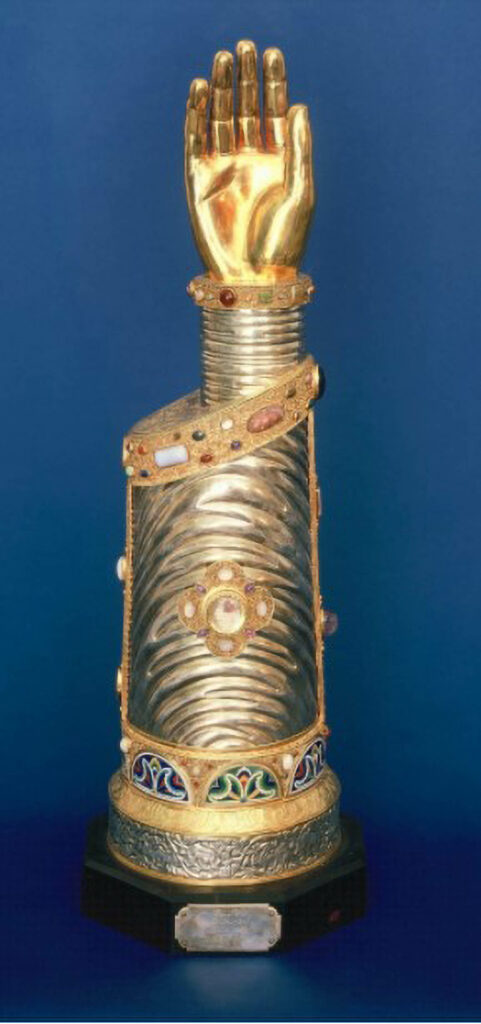This stolen relic, believed to contain a bone belonging to a saint who died in 1597, that disappeared from a confessional chapel in Germany four years ago has been recovered in France after an eagle-eyed collector alerted the authorities.
The theft took place in October 2017 when a golden arm believed to contain a bone belonging to Saint Peter Canisius, the patron saint of the Canisian Brotherhood, a Catholic Order founded in 1854, disappeared from a chapel in Kevelaer, a town in the German state of North Rhine-Westphalia.
The item was about to be put up for auction by an auction house in the French town of Doullens, which is located in the Somme department in northern France, with a starting bid of just EUR 4,500 (GBP 3500).
But luckily, an unnamed, eagle-eyed art collector recognised the item, remembering that he had read about the theft four years ago, and he alerted Professor Thomas Flammer, 46, the head of the art and culture department in the diocese of Muenster, to which Kevelaer belongs.
Flammer is quoted by the German daily Bild as saying: “An art collector from France got in touch. He had become aware of an auction – and remembered reading about the theft of the relic.”

(Sankt Marien Kevelaer/Newsflash)
The expert compared photographs from the auction house’s catalogue with images of the relic before it was stolen, and he said: “The relic seems to have been chemically treated, the strong gold sheen had disappeared. However, the thieves did not remove the label on the base, which clearly indicates the origin.”
The expert contacted the police, saying: “It was now a matter of speed, because the reliquary was to be auctioned off three days later, on 7th November.”
The expert was even permitted by the dioceses to bid on the item, should the auction go ahead.
But thankfully, assistance from the French police was requested via Interpol, and the French authorities went to the auction house and seized the stolen item.
Experts say that such an item could easily have reached a five-digit price on the market, according to Bild, not least because very few craftsmen alive today would be able to create an object like this.
The authorities are currently investigating how the relic ended up in the French auction house.
The shocked auction house was reportedly cooperative with the authorities.
It is currently unclear when the stolen item will be returned to Germany, with Flammer saying: “For now, it will be kept in a safe place.” It is also currently unclear if the reliquary still contains the alleged relic of Saint Peter Canisius.
In Kevelaer, the recovery has been met with joy, with Rector Gregor Kauling, 57, saying: “That was a surprise and I’m happy that everything now seems to be going well. Because Kevelaer is very closely connected to Saint Peter Canisius.”
Saint Peter Canisius, who is also known as Peter Kanis, was a famous Dutch Jesuit Catholic priest who defended the Catholic faith during the Protestant Reformation that took place in Austria, Germany, Switzerland and the British Isles. He was made a saint in 1925.
To find out more about the author, editor or agency that supplied this story – please click below.
Story By: Joseph Golder, Sub-Editor: William McGee, Agency: Newsflash
The Ananova page is created by and dedicated to professional, independent freelance journalists. It is a place for us to showcase our work. When our news is sold to our media partners, we will include the link here.




